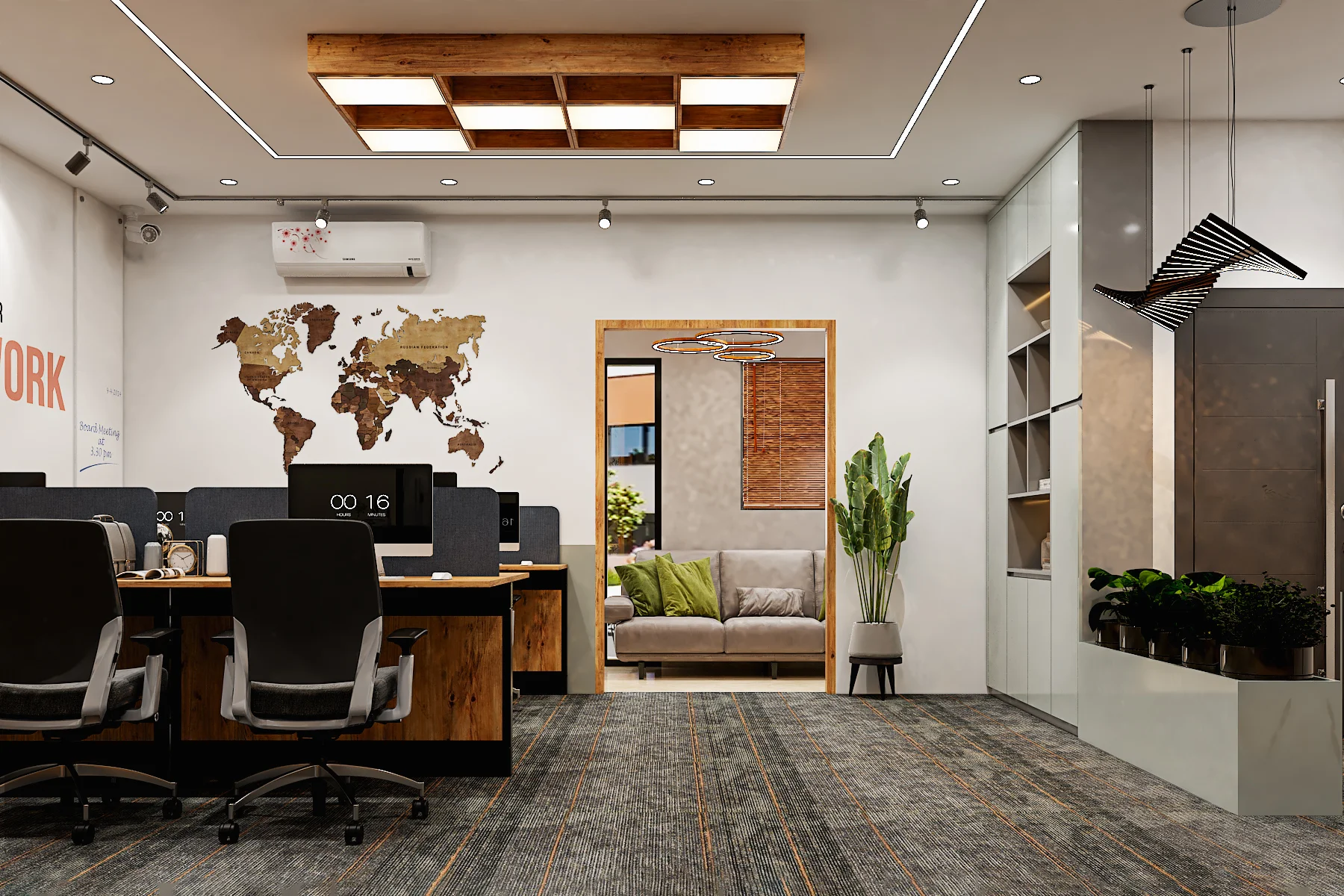In today’s fast-paced work environment, office design plays a crucial role in promoting productivity, collaboration, and employee well-being. One often overlooked but vital element of office design is acoustics—the science of sound and how it interacts with the space around us. Poor acoustics in the workplace can lead to distractions, stress, and reduced productivity, whereas well-designed acoustics can enhance focus, comfort, and communication. At WeDezine, we understand the significance of acoustics in creating a harmonious office environment that works for everyone.
Let’s explore the importance of acoustics in office design and how it can transform a workplace into a more functional and pleasant space.
1. The Impact of Noise on Productivity
Office noise, especially in open-plan layouts, can be a major disruption. From phone calls and conversations to the hum of machines, excess noise often leads to:
- Reduced concentration: Constant distractions can make it hard for employees to focus on tasks.
- Lower productivity: Studies show that noisy environments can decrease productivity by up to 66%.
- Increased stress: Prolonged exposure to noise can lead to elevated stress levels, affecting mental and physical health.
Acoustic solutions tailored to the office can reduce these distractions, creating a quieter environment where employees can perform their best.
2. Acoustic Design Solutions for Offices
To improve the sound environment of an office, it’s essential to consider both sound absorption and sound insulation. A well-designed acoustic strategy balances noise reduction without creating an unnaturally silent or “dead” space. Here are some effective solutions:
a. Acoustic Panels and Ceiling Treatments
Installing acoustic panels on walls or ceilings can significantly reduce sound reflections. These panels absorb sound waves, minimizing echo and background noise. Ceiling treatments such as suspended acoustic tiles can also help control noise in large open spaces, especially in modern open-plan offices.
b. Sound-Masking Systems
Sound masking introduces a subtle, consistent background noise that covers disruptive sounds, such as phone conversations. By raising the overall ambient sound to a more uniform level, it reduces the intelligibility of distracting noises, helping employees stay focused.
c. Furniture and Layout
Furniture itself can be part of the acoustic solution. Soft furnishings like carpets, upholstered seating, and curtains absorb sound, reducing noise transmission. Creating zoned spaces within an office—designating areas for focused work, collaboration, or relaxation—can also mitigate the spread of noise across the entire floor.
d. Acoustic Partitions
For open-plan offices, acoustic partitions or sound-absorbing dividers can provide much-needed privacy and noise control without the need for completely enclosed rooms. These partitions create semi-private spaces that allow for conversation without disturbing others.
3. Balancing Acoustics for Different Work Zones
Office design often includes a variety of spaces, each serving different functions—from quiet areas for focused work to collaborative zones for team brainstorming. Each of these areas has distinct acoustic needs:
- Focus areas require sound isolation to prevent distractions. Quiet zones can benefit from acoustic baffles, carpeting, and insulated partitions.
- Collaboration zones thrive on a balance of sound containment and openness. Acoustic ceilings and sound-dampening wall treatments can help manage noise while keeping the energy of group work intact.
- Meeting rooms need special attention to both soundproofing (to prevent conversations from leaking out) and clarity within the room (to enhance communication). In these rooms, sound-absorbing materials like acoustic wall panels and carpet tiles are essential for clear dialogue and privacy.
4. Acoustics and Employee Well-being
Beyond productivity, acoustics play a significant role in employee well-being. A well-designed acoustic environment contributes to:
- Reduced stress levels: Employees working in acoustically comfortable environments report lower stress and fatigue.
- Better communication: In quiet environments, team members can communicate clearly without raising their voices, reducing strain and fostering better collaboration.
- Privacy: Acoustic treatments ensure that confidential conversations in meeting rooms or private offices do not leak into public spaces, protecting sensitive information.
With employees spending long hours in the office, acoustics are a key factor in maintaining a positive and healthy workspace.
5. Sustainability and Acoustics
At WeDezine, we prioritize not just design functionality, but also sustainability. Many acoustic materials today are crafted from eco-friendly, recycled materials like polyester fibers, making them an excellent choice for businesses that want to incorporate sustainable practices into their office design. Acoustic solutions can also contribute to energy efficiency, as some sound-absorbing materials provide additional thermal insulation, reducing the need for excessive heating or cooling.
Conclusion: The Future of Acoustic Design in Offices
As the modern office continues to evolve, so too will the importance of acoustic design. At WeDezine, we integrate advanced acoustic solutions that not only solve noise-related challenges but also enhance overall workplace well-being. Whether it’s creating peaceful spaces for focused work or ensuring clear communication in collaborative zones, thoughtful acoustic design is key to building a more productive and comfortable office.
If you are looking to redesign your office or improve its functionality, contact WeDezine today. Let us help you create a workspace that sounds as good as it looks!


